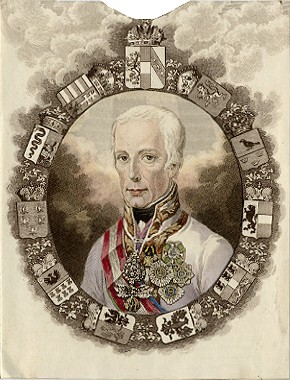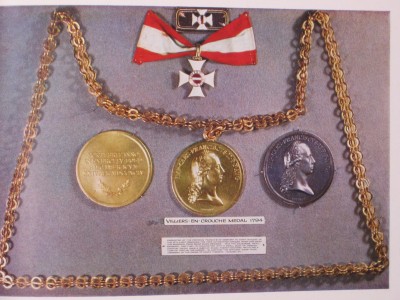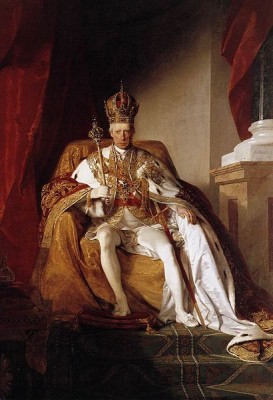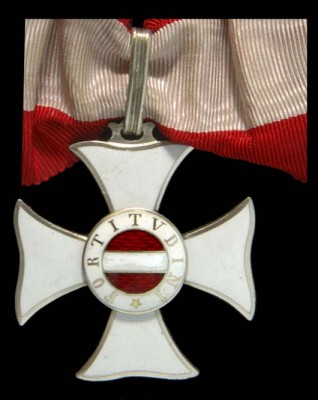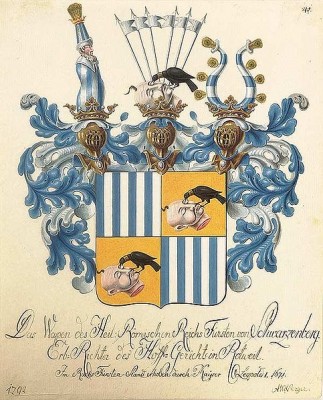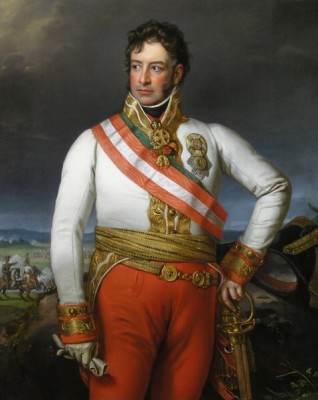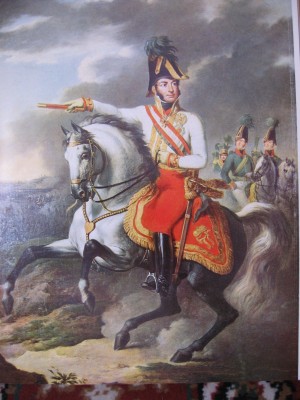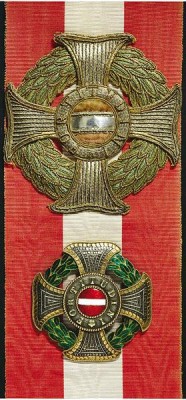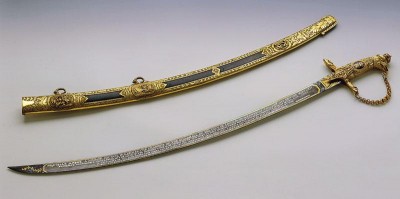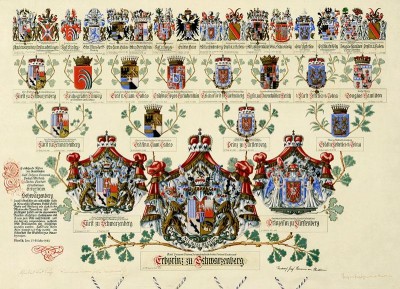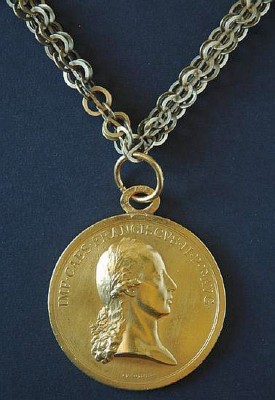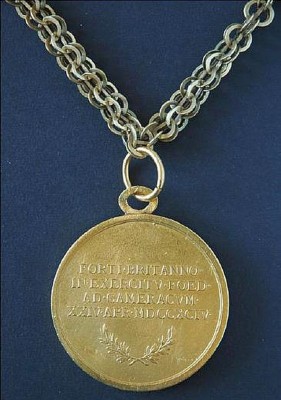I would after such a long time the only, copy this article as a tribute to mr. Měřičkovi and Karel prince of Schwarzenberg.
C a T E And U C And M B R a S S I S
Revolutionary France said on 20. April 1792 war on Austria and Prussia, and gave the order for their armies to invade Belgium, because it considered that the imperial army, in the strength of the approximately 40 000 men, is not ready. Imperial soldiers in Belgium was commanded by the then governor, prince Albert, the duke těšínský, the husband of the eldest daughter of the empress Maria Theresa, arcikněžny Maria Kristina.
To the north have penetrated two of the French army. North, in the strength of the approximately 35 000 men, the second in the strength of the 28 000 men under the marquis Lafayttemthrough Sedan on Givet. Both the army however ran into stiff resistance, and withdrew in considerable disarray, back to France. In the meantime, but has collected a numerically strong army (82 000 men - from 42 000 Prušáků, 20 000 Austrians, 6000 guests to use and 14 000 French expatriates) under the Charles, duke of Brunšvíku, in area Luxemburg and barging on French territory. These operations militarily supported the duke těšínský with its 40 000 troops. On the left flank, followed the imperial forces under the prince of Hohenlohe-Kirchbergem in the direction of the on Saarlouis and Diedenhoven.
The prussians penetrated on 20. August to Lingey with the new commander in chief of the French general Dumouriezem. the Action of Valmy forced the Prussians to retreat, and even the imperial forces under Clerfaytem de la Croix retreated to Belgium. At the end of November, they were French emigrants in the area Lüttich disbanded. Yet the duke těšínský on 8. of September drove the French out of the camp Maulde and surrounded Lille.
After the departure of the Prussians from France, followed the French under Kellermannem to Germany, and general Dumouriez himself in the head 52 000 men, stormed into Belgium and defeated the Alberta day 6. November in the battle of Jemappes. Subsequently occupied the whole of Belgium. The imperial troops under the command of Clerfaytovým went to the Netherlands, while Custine with the French and rhine army occupied Špýr and Frankfurt am Main. The year 1792 is finished for the revolutionary army victorious, even if the rhine army permanently in the conquered cities lost it and was hessian pushed out.
In 1793 with Austria and Prussia joined together in the protifrancouzské coalition of England, Holland and Sardinia. On the south it joined Spain and within France there was an uprising in the Vendée. The French in February, invaded the Netherlands and occupied the Maastricht, but already 1. march 42 000 Austrians under the prince Josiasem Koburgským crossed Roeru, freed Maastricht of tongs and beat Dumourieze 18. march in the battle of Neerwinden and again 22. march in the battle of Löwen. After the defeat of the French army withdrew back to France, and general Dumouriez had defected to the enemy. In these battles distinguished himself, and for the first time drew attention to himself brother of the roman emperor, the archduke prince Charles Louis, then as a major general, received on 1. April 1793 the grand cross of the the Military order of Maria Theresa.
Josias Koburský, however, did not progress rapidly in French, but waited for the English and the Dutch auxiliary troops, and so eventually, when the English decided for the action in Dünkirchenu, had to be content with the conquest of the fortress of Conde on 13. July with a cast of Valenciennes. The French then under the Houchardem defeated the English at Hondschoote 6. September, with them caused great losses. The imperial forces try to oblehnout Maubeuge, but gave up this attempt, when the battle of Wattignies 15.-16. October ended up against the Jourdanovi tie.
Yet Germany fought the duke of Brunswick quite successfully in the battle of Pirmasenu 14. September, where he defeated the French rhine army, prevailed again in November at Kaiserslautern, but he also was forced in Landau quit your procedure, when the austrian auxiliary corps under the Wurmserem was beaten by general Boy u Weissenburgu in December of the same year. Both coalition armies withdrew to the right rhenish shore, while the French troops under Pichegruim attracted to Mainz.
20. August 1793 in France, declared a general conscription and carried out a big reorganization of the army. The old system of the French regiments was abolished and on their place have embraced the new tactical unit composed of three battalions of infantry and four driving eskadronami in the form of půlbrigád. In this way, stood up to France at the end of the year 1793 to the field 730 000 men. At the beginning of the year 1794, stood on the north army Pichegruova in the strength of the 270 000 men against the 140 000 men of the united troops of the austro-English-Dutch. Austria built in the Netherlands and on the Rhine to fight a total of 200 000 soldiers Prussia with English-Dutch by 62 to 400 men, England herself another 26 000, Hannover 18 000, Hessen 12 000 and Brunswick 2000 soldiers.
Emperor Francis II. appear in person at the beginning of April 1794 in Belgium, to present struggles. Actions were initiated to march on the French fort Landrecies. The main focus of the fighting but was transferred to the space Cateau Cambrésis, where imperial 17. April won, and they so crowded the fort on 30. April surrendered. U Tourcoingu while sustained the allies on 18. may significant losses, but these grips 22. may u Toutnay. So far, Jourdan advanced with his army from the area of the Moselle river in the direction of the river Sambru and won 26. June over the Josiasem Koburgským u Fleurusu. At this moment the French had to the offensive, occupied the Brugge and Mons, in October the whole of Belgium, with Cologne, Bonn and Koblenzem.
Day 4. November conquered the French Maastricht. In the meantime, the general Pichegru, which progressed to the north and fought with the English corps which he commanded the English the duke Frederick of York and Albany, conquered the Crevecoeur, Herzogenbusch and Venlo.
Day 3. November has seized Nimwegenu and occupied the whole country up to the river Waalu. The duke of York relinquished command and handed them over to hannoverskému general Walmodenovi. Pichegru, who was ill, was relieved by the new French general Moreau, who launched another offensive and conquered gradually to 10. January 1795 the whole of Holland. The consequence of these, for the coalition of unfortunate events, is the conclusion of the basel peace on 5. April 1795 between Prussia and France. Because then Prussia was the main partner of the war against France, is over this first period of the coalition wars, without managed through enormous sacrifice, to impose against revolutionary France, a military decision and thus its defeat. On the contrary, the Dutch positions were lost.
We will return now back to the events of April of the year 1794, when the battles moved to the area of Landrecies, and entered into history under the name of the battle of Cateau Cambrésis. As I have already said, arrived on the belgian battlefield day 9. April 1794 by the emperor himself Francis II. After a visit to Brussels with the emperor ended up on 14. April in the army in Valenciennes, then in the immediate vicinity of the siege of the fortress of Landrecies. The imperial forces numbered approximately in this area of 67 000 men. The whole was commanded by Josias Kobugský, an auxiliary corps of the English general, the duke of York, the Dutch prince of Orange potomní the Dutch king William I.
Own battle unfolded between 17. to 26. April. 17. April won the imperial in Cateau Cambrésis and at Landrecies. 20. April captured the French camp on the left bank of the Sambry and thus have completed the closure of the fortress of Landrecies. 21. April, the emperor went to Brussels, to the evening of day 23. April was again with the archduke Karl Ludwig in the main tent Josiase Koburgského in Catillonu. At that time English positions were located on the right wing of Cateau Cambrésis to the river Sambře.
In the middle of the Priches was commanded by the count Kinskýon the left wing in space Maroilles field-master-at-arms Alvinczi.
24. April 1794 in one of the smaller events, was the emperor of the Francis II. personally witnessed a unique riding attacks, which they did with great courage and bravado members 15. English švališerského regiment (Cheveaux-legres). It happened near the village of Villiers en message to couch. The English under the command of lieutenant colonel 15. švališerského regiment William Ayletta, they attacked the numerically superior enemy and the wild whoop is rozšavlovali. This whole battle scene didn't last longer than 10 minutes, yet it was one of the best-made cavalry attacks. Emperor Francis II. he was so excited and pleased that he established for 8 of the English cavalry officers, who are so much in action at Villiers en message to couch distinguished, extraordinary honours:
GOLD COMMEMORATIVE MEDAL
The medal is minted from gold, and represents on the obverse from the right side of the displayed bust of emperor Francis II. looking to the left edge of the medal (heraldicky). Around the bust is the inscription :
IMP. CAES. FRANCISVS II. P.F. AVG.F.
On the side of the medal is a four-line inscription :
FORTI BRITANNO / IN EXERCITV FOED / AD CAMERACVM / XXIV. APR. MDCCXCIV.
In translation :
The emperor Francis II. Pious, Happy, Noble / Brave Britu - Military allies - to a Friend - 24. April 1794
At the bottom of the medals are placed two crossed sprigs of laurel. Ear circular, naletované, the chain of double gold circular articles, to each other united. The medal has a diameter of 60 mm, and weighs even with the chain 140 g., i.e. 40 ducats. Decorated officers had the right to wear in his buttonhole the ribbon of the Military order of Maria Theresa. A total of was awarded 8 british officers :
l. lieutenant Colonel Wiliiam Aylett
2. Major Robert Pochlington (whose medal was in the collection of prof. Fattovitsche)
3. Major Edward Ryan
4. Major Cranby Calcrafr
5. Major William Kier (or Keir)
6. Major Edward Butler
7. Major Robert Wilson
8. Captain Charles Blount
All were members of the british royal 15. švališerského regiment. Cheveaux-legers were light cavalry, originally French, from the time of king Henry III. and this has always been formed by one švadronou included to an ordinary cavalry regiment.
Note:
Personal honours one of the eight English officers, major Robert Pochlingtona. A rare medal from the year 1794 to the gold chain and the original knight's cross of the Military order of Maria Theresa from the year 1800. Both honors are (were ?) in a unique collection of dr. Giovanni Fattoviche in Venice. The picture is taken from a publication of mr. Měřičky.
Cateau Cambrésis, the main city of the canton of Cambrésisi in arondissementu Cambrai, the French department of the Nord, known from the battle on 17.-26. April 1794, where troops Josiase Koburgského fought against the French..
